The Tulip Approvals functionality is only available on "Enterprise" plans and above.
Overview
More information on the app management features of Tulip is available here: Intro: App Management.
Tulip is designed to help users make a significant impact on their operations through rapid iteration of solutions deployed to production. Ensuring safety during these changes is essential for nearly all Tulip deployments.
To address these competing needs, Tulip supports the ability to publish applications and, optionally, allow a round of approvals before any version is released to production.
Publication Flow Overview
Publication is intended to be a lightweight process that meets your needs without excessive overhead. Detailed information on the publication process can be found here: Create and Manage App Versions.
At its most complex, the lifecycle of an application version has four phases:
- Development
- Changes can be made freely and flexibly by users with adequate permissions.
- Pending Approvals [optional]
- In this phase, approvers can review and test applications.
- Pending Release [optional]
- In this phase, applications can be used for training and staged for release.
- Published
- In most cases, these will be the versions running on the shop floor.
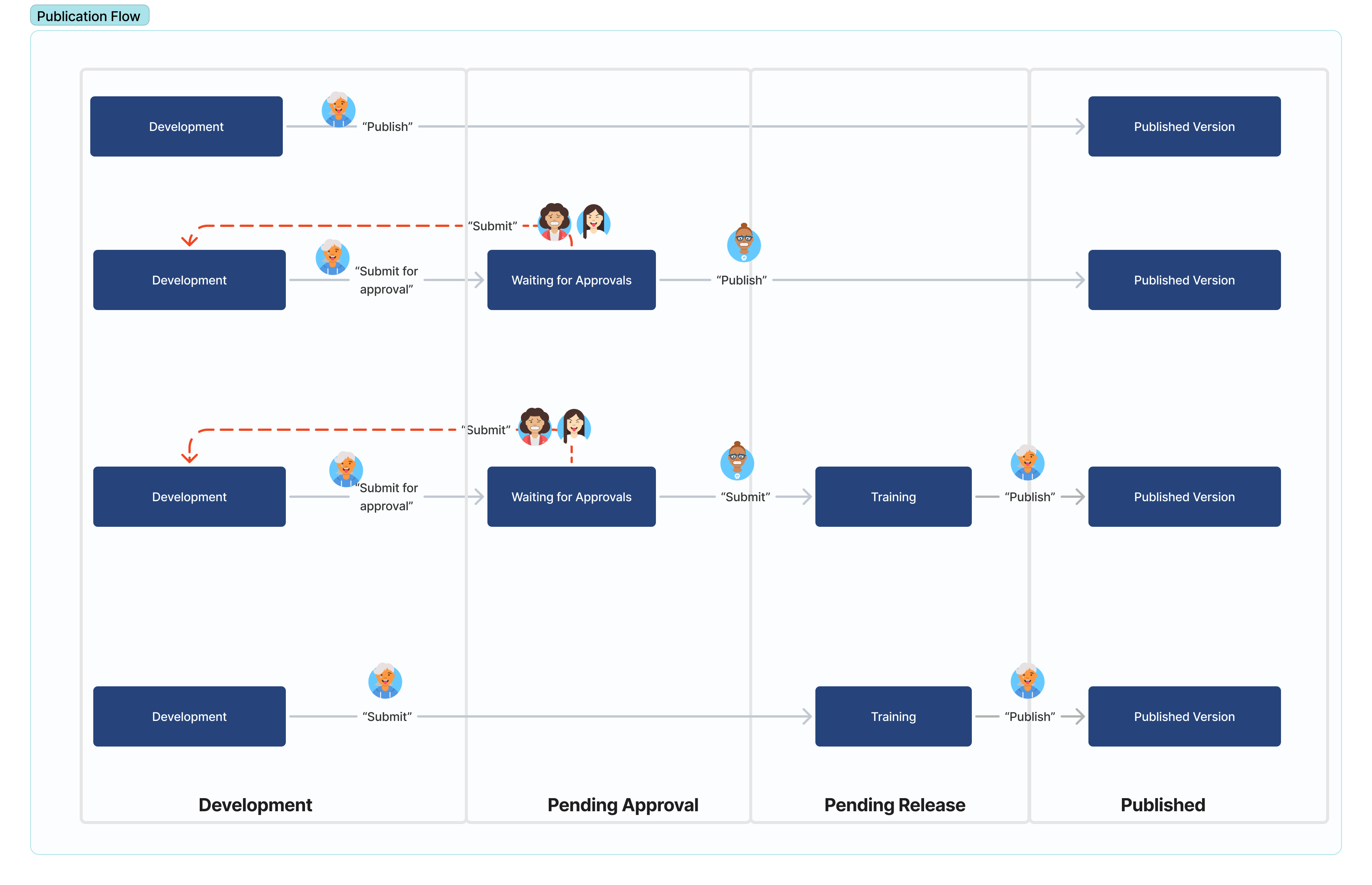
Note: Only one version of an application can be in phase 2 or 3 at a time. Multiple application versions cannot undergo approvals/training simultaneously.
Publication Configuration
The app publication process has two steps:
- List Version Details - List the changes with this version.
- Determine release process - Determine the stages that this application will go through.
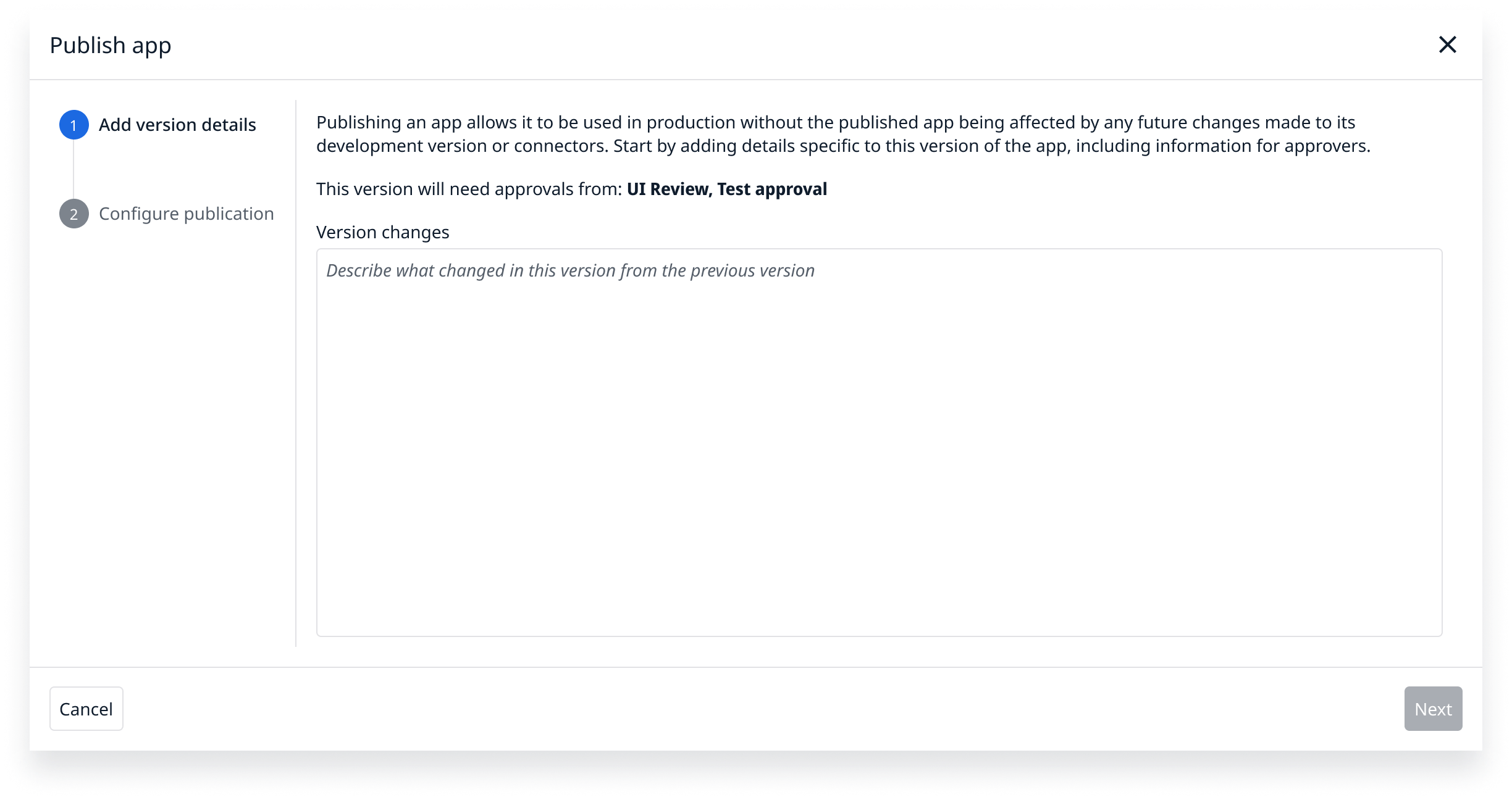
Approvals
More details on approvals are available here: Set Up Approvals for Your Apps.
Approvals allow you to associate a group of users with an application, prompting them to review and approve application versions before their release. Approvals must be configured from the Approval Types tab of the app overview page.
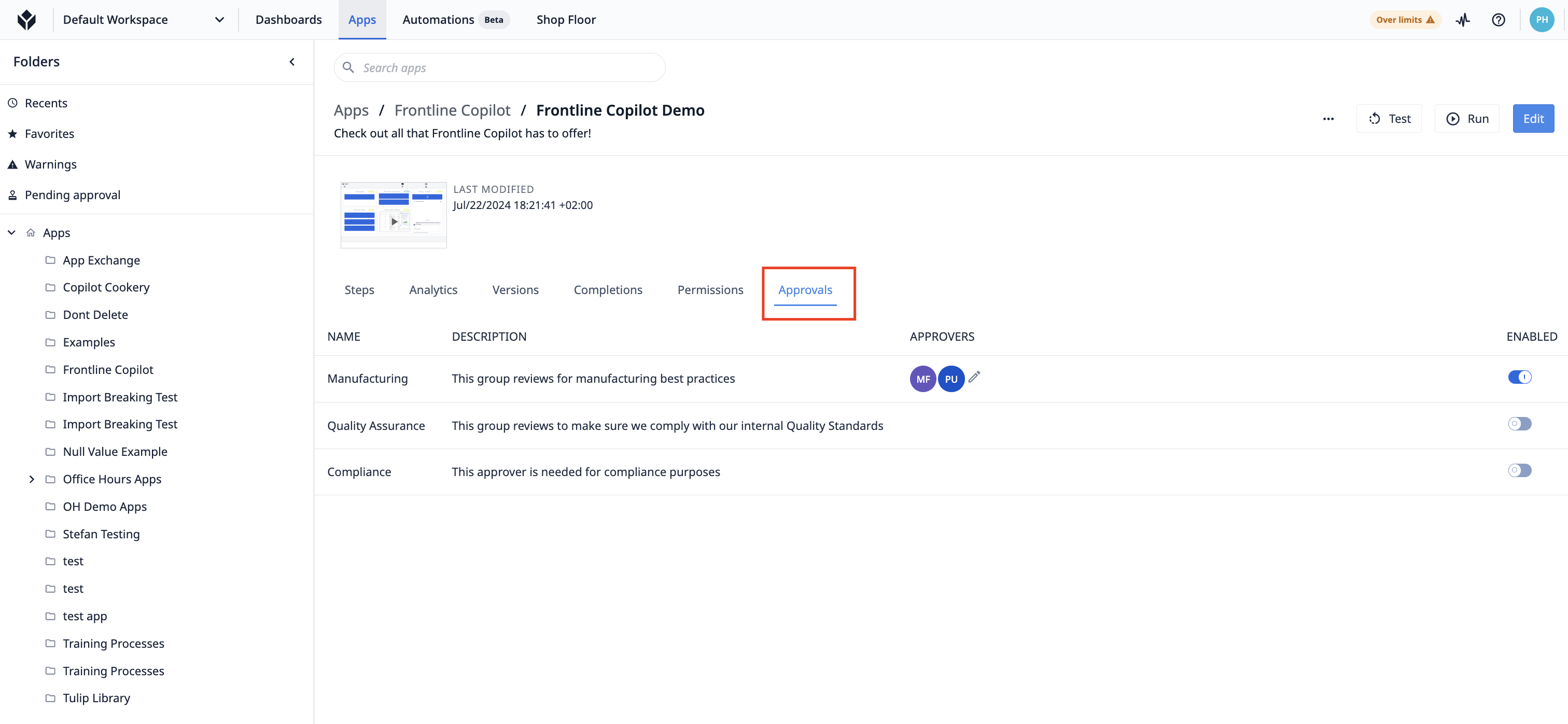
Version Details
In the version details step, users should provide a concise description of the changes in this application. This description will be included in the approval process and associated with the application version going forward.
Publication Configuration
In this step, users can configure how the application version will be released. Users can choose between two options: Publish Immediately and Publish Later.
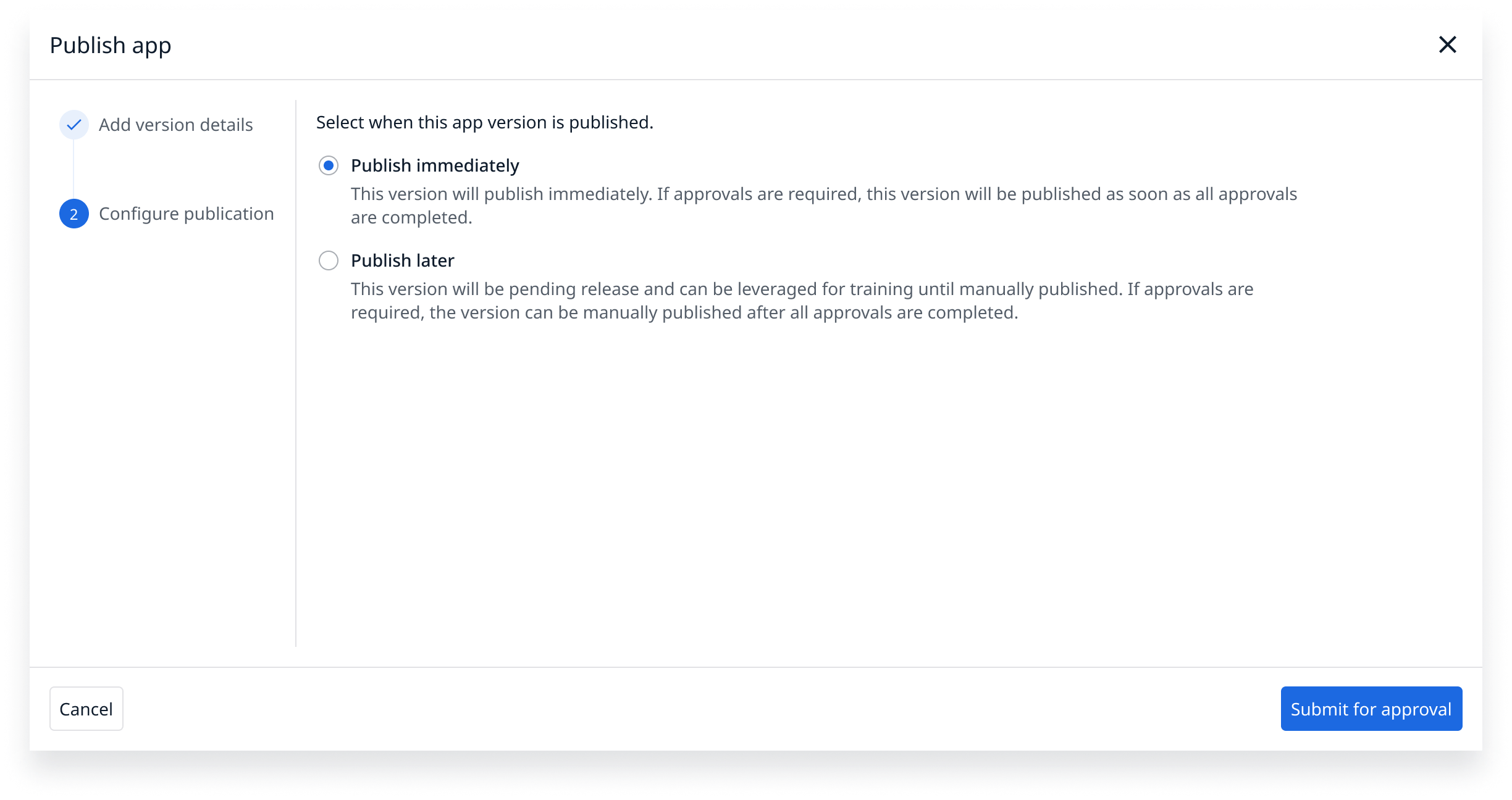
Publish Immediately [Default]
Versions with this selection will automatically be released when the previous step of the process is complete. If approvals are selected, publication will occur immediately after the final approval is complete.
Publish Later
When selected, an application will be moved to the Pending Release state. During this pending release state, users with adequate permissions can train users at production stations with the respective application version. Publication can be done manually when all training has been completed, according to your internal process.
Note: this setting can be changed at any point during the approval process.
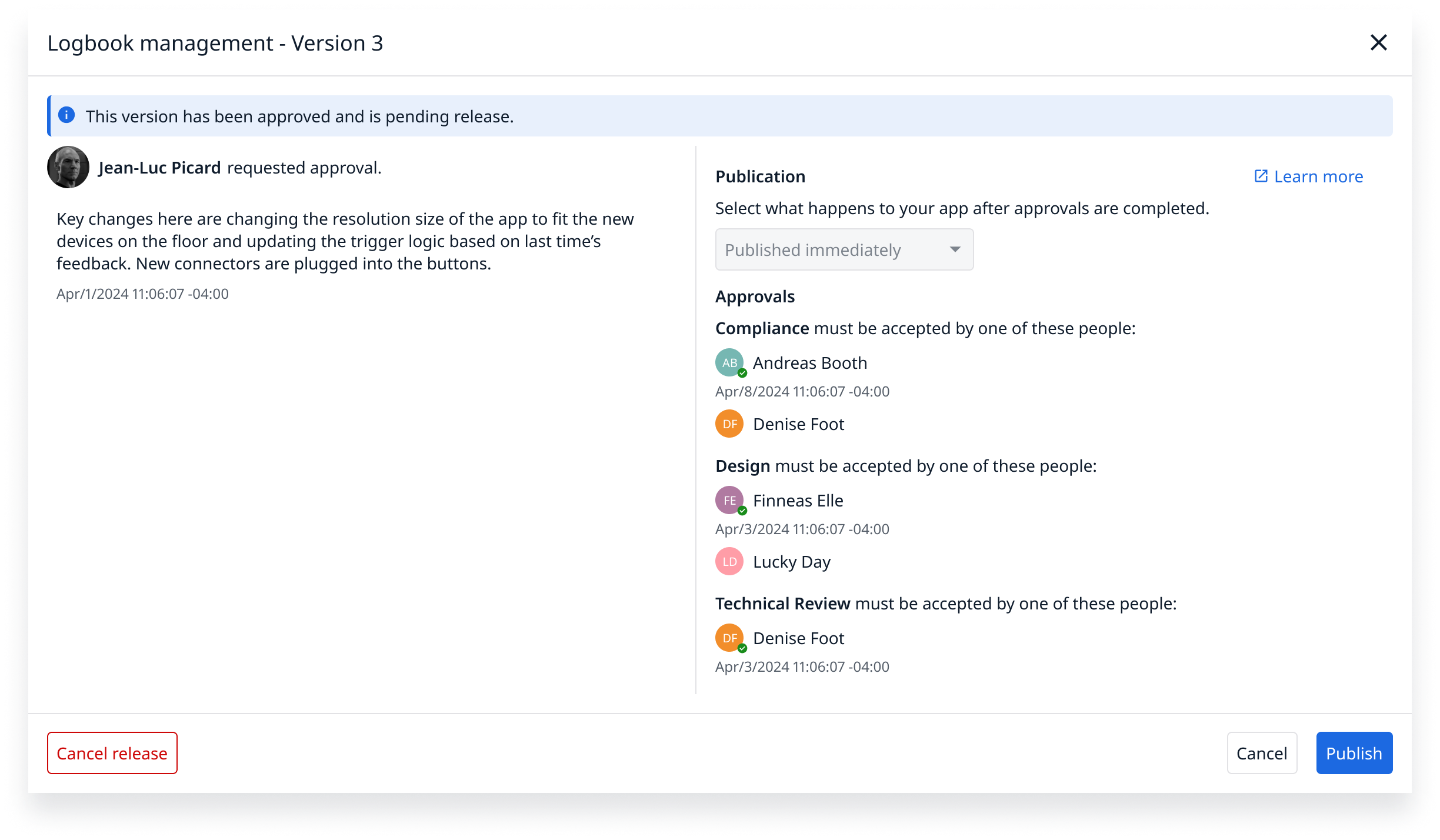
Training with Pending Release Apps
Applications can be configured to transition into a Pending Release state to facilitate training users on new versions of applications ahead of their release.
Admins, Account Owners, Workspace Owners, and users with the "Override app version assignment" custom user role permission can log in to Tulip Player and change the application version running to any pending release version of the respective application. This will override the station-assigned version, allowing trainers to train users.
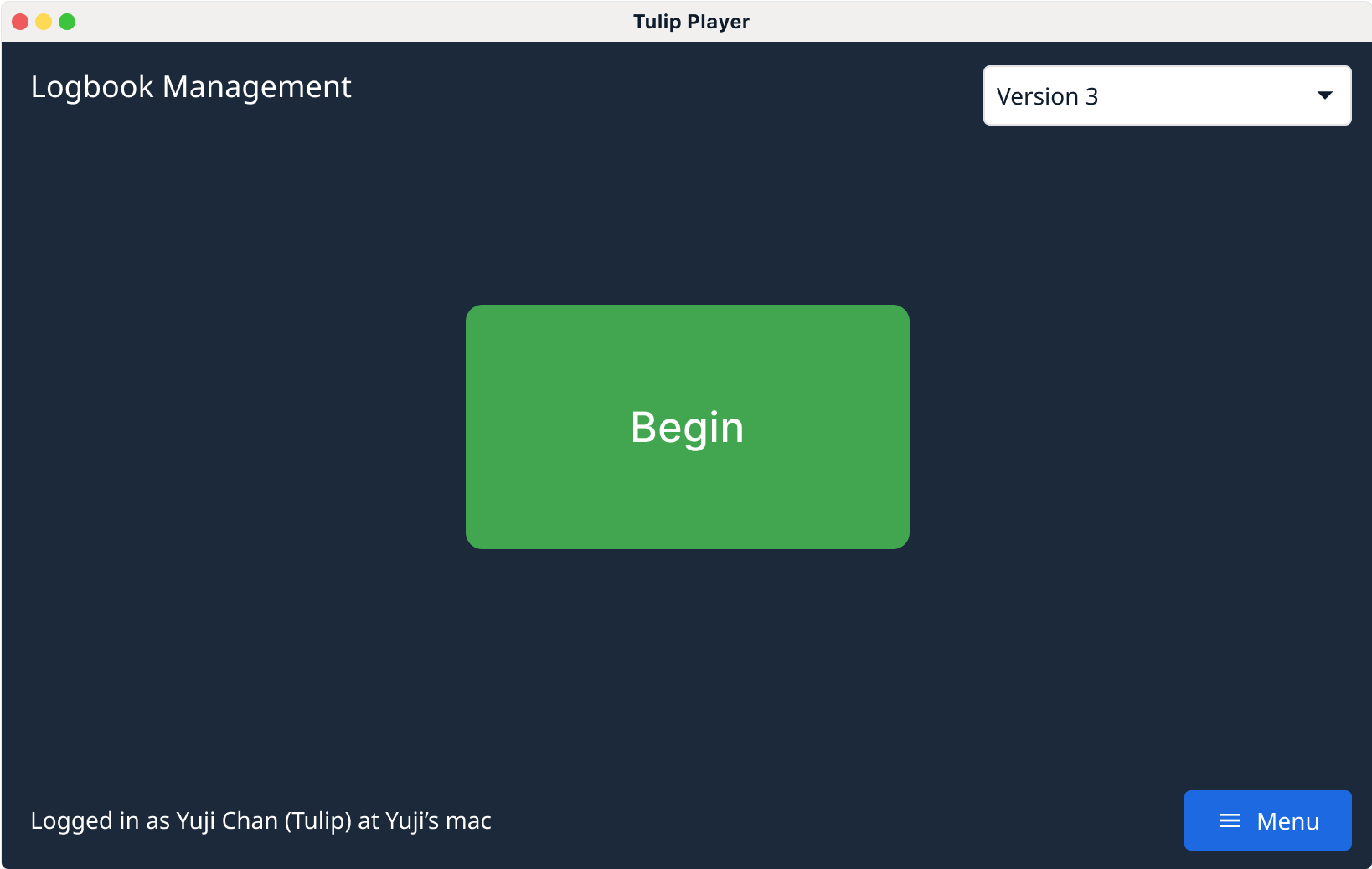
More information on Custom User Roles is available here: Customize User Roles
By following these guidelines, you can effectively manage your app's versions, ensuring a safe and efficient deployment process.
